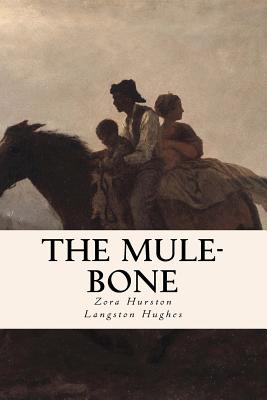Website Under Construction
We are in the process of upgrading our website to a newer (better!!) version, so you cannot place orders today. Check back beginning May 15, 2024 to see the improvements yourself!
You are here
Back to topThe Mule-Bone (Paperback)
$5.75
Usually Ships in 1-5 Days
Description
Mule Bone: A Comedy of Negro Life is a 1930 play by American authors Langston Hughes and Zora Neale Hurston. The process of writing the play led Hughes and Hurston, who had been close friends, to sever their relationship. Mule Bone was not staged until 1991. The play begins in Eatonville, Florida, on a Saturday afternoon with Jim and Dave fighting for Daisy's affection. The two men come to blows, and Jim picks up a hock bone from a mule and knocks Dave out. Jim is arrested and held for trial in Joe Clarke's barn. On Monday, the trial begins in the Macedonia Baptist Church. The townspeople are divided along religious lines: Jim's Methodist supporters sit on one side of the church, Dave's Baptist supporters on the other. The issue to be decided at the trial is whether or not Jim has committed a crime. Jim admits he hit Dave but denies it was a crime. Elder Simms argues on Jim's behalf that a weapon is necessary to commit a crime, and nowhere in the Bible does it say a mule bone is a weapon. Elder Childers, representing Dave, says Samson used a donkey's jawbone to kill 3,000 men (citing Judges 18:18), 2] so the hock bone of a mule must be even more powerful. Joe Clarke declares Jim guilty and banishes him from town for two years. Hughes and Hurston began writing Mule Bone in March 1930. They wanted to write a comedy about African-American life that didn't consist of racial stereotypes. They decided to base the plot on a folktale Hurston had collected in Florida during one of her anthropological field trips. The two writers dictated their work to Louise Thompson, who typed it. Their work was almost completed in June, when Hurston went away for the summer. She took her notes and said she would return in the fall, and they could finish the play. When Hurston came back, she would not return telephone calls from Hughes. She felt he wanted Thompson to be considered a third collaborator in the project, a proposal to which she strongly objected. 7] 8] Concurrently, Hughes was in the process of severing his relationship with their common literary patron, Mrs. Rufus Osgood Mason. Reviewers have conjectured that Hurston may have been trying to protect her own relationship with Mason by shunning Hughes. Hurston submitted Mule Bone for copyright in October 1930, listing herself as the only author. In January 1931, Hughes found that a copy of Mule Bone had been sent to the Gilpin Players, an all-black theatre company in Cleveland, for their consideration-bearing only Hurston's name. Hurston told Hughes she hadn't sent them the play, an assertion that was true, but Hughes was furious. He sent a copy for copyright under both their names. In the meantime, the Gilpin Players wanted to stage the play. The play was still somewhat rough, but Hughes was in Cleveland, and he offered to help rewrite portions of the play. Hurston sent a telegram advising that she refused to allow the production. A day later, she sent another telegram authorizing the production on the condition that she be allowed to work with Hughes on changes. That same day, Hughes received a letter from Hurston saying that no part of the play had been written by him. In light of all the off-stage drama, the Gilpin Players decided not to proceed with their production. The copy of Mule Bone in the Langston Hughes papers at Yale University has a hand-written notation by Hughes: "This play was never done because the authors fell out.
